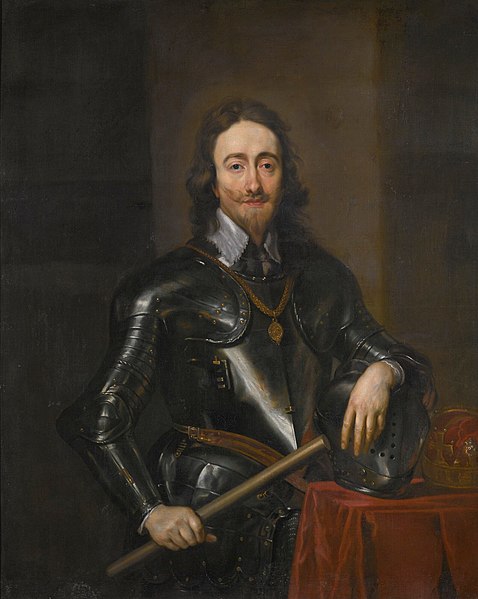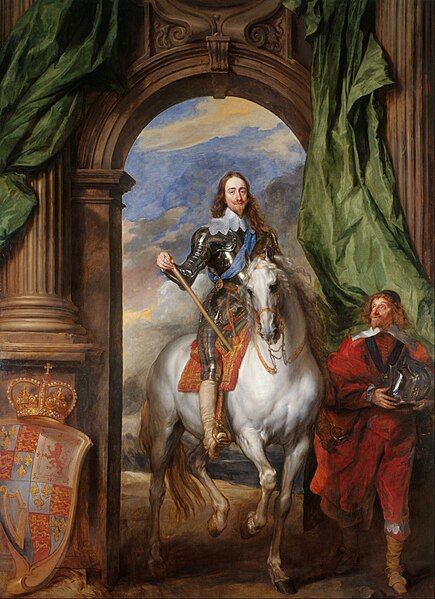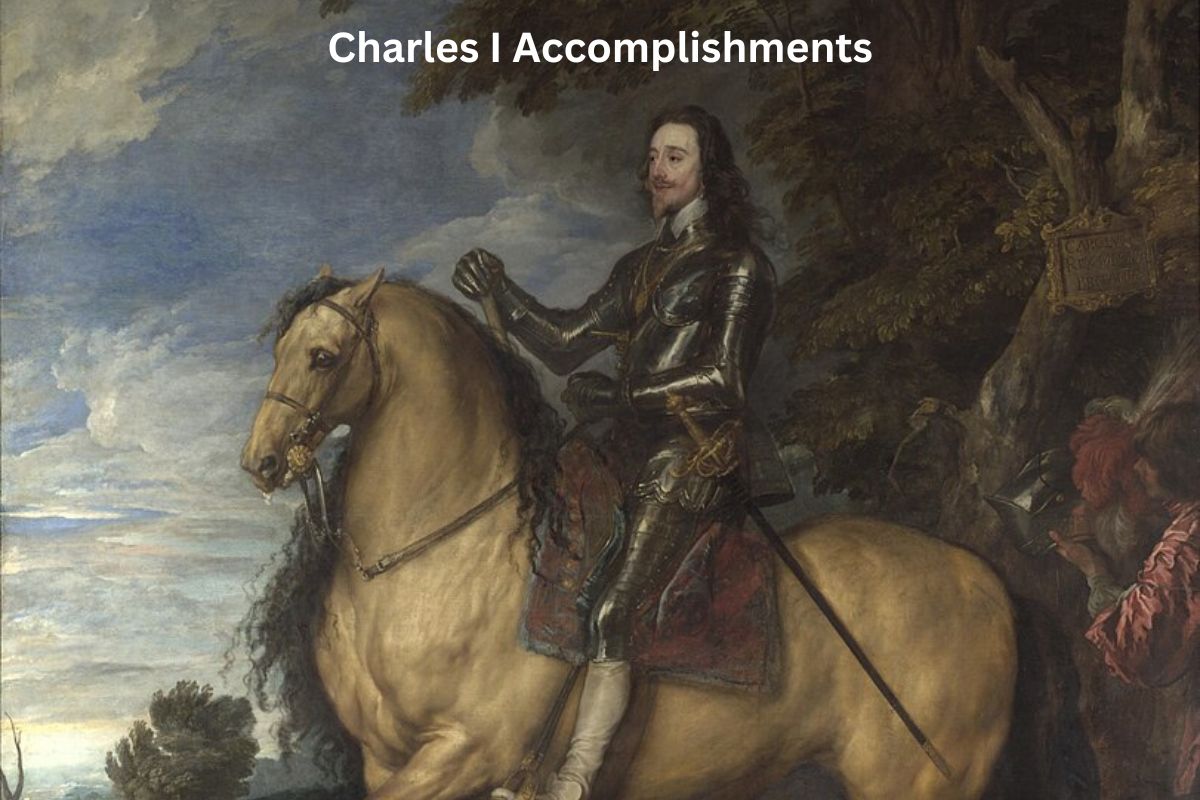Charles I (1600-1649) was the King of England from 1625 to 1649. His reign was characterized by significant political conflicts with Parliament, religious tensions, and a failed attempt to assert royal authority.
He married Henrietta Maria of France and had several children, including Charles II.
Charles I’s rule ultimately led to the English Civil War, a pivotal event in English history, and his execution in 1649, making him the only English monarch to be executed by beheading.
Despite these tumultuous events, his patronage of the arts and contributions to English architecture remain notable aspects of his legacy.
Accomplishments of Charles I
1. Personal Rule (Eleven Years’ Tyranny)
Charles I’s personal rule, often referred to as the “Eleven Years’ Tyranny,” was a period from 1629 to 1640 during which he ruled without calling Parliament.
This was a significant accomplishment because it allowed him to govern without the constraints and interference of Parliament, giving him greater control over the kingdom.
Also Read: Facts About Charles I
However, it was also highly controversial, as it bypassed the traditional checks and balances of English government and contributed to growing tensions between the king and his subjects.

2. Peace treaties with France and Spain
Charles I successfully negotiated peace treaties with France and Spain during his reign. These treaties played a crucial role in ending England’s involvement in the costly and protracted Thirty Years’ War, which had drained the kingdom’s resources.
Also Read: English Civil War Facts
The Treaty of Susa (1629) with France and the Treaty of Madrid (1630) with Spain brought about a period of peace that allowed England to redirect its focus and resources toward domestic matters, contributing to economic stability and reduced military expenditures.
3. Patronage of the arts and art collection
Charles I was a renowned patron of the arts. He had a deep appreciation for art and assembled one of the most impressive art collections of his time.
His patronage of artists like Peter Paul Rubens and Anthony van Dyck helped promote the arts and culture in England.
Van Dyck, in particular, became the court painter during Charles’s reign, producing numerous portraits that captured the royal family and nobility in a sophisticated and elegant style.
Charles’s art collection laid the foundation for the later Royal Collection, which remains a significant cultural legacy in the United Kingdom.
4. Levying of Ship Money tax
Charles I successfully implemented the Ship Money tax, which was traditionally imposed during times of war to fund the navy.
However, Charles extended its application to peacetime, which was a source of controversy. This tax was collected from coastal towns and counties to support the maintenance and expansion of the English navy.
While it helped strengthen England’s naval defenses, it also became a point of contention as many saw it as an abuse of royal power and a violation of established legal norms.
The legal challenges and resistance to Ship Money contributed to the broader tensions between the king and Parliament.
5. Development of the Royal Navy
Charles I took a keen interest in the development and expansion of the Royal Navy. His reign saw efforts to modernize and strengthen England’s naval capabilities, recognizing the importance of a powerful navy for national security and trade protection.
While his father, James I, had already begun building a more formidable navy, Charles continued these efforts by investing in shipbuilding, increasing the number of warships, and improving the organization of the navy.
These developments laid the foundation for England’s later naval prowess during the 17th century and beyond.

6. Acceptance of the Petition of Right
In 1628, Charles I reluctantly accepted the Petition of Right, a significant constitutional document. This accomplishment marked a concession to Parliament and a recognition of certain fundamental liberties and rights of English subjects.
The Petition of Right affirmed that the king could not levy taxes without parliamentary consent, imprison subjects without cause, quarter soldiers in private homes during peacetime, or declare martial law.
While Charles’s acceptance of the petition was somewhat forced due to financial constraints, it represented a crucial moment in the ongoing struggle between the monarchy and Parliament over the balance of power.
7. Promotion of religious tolerance
Charles I made efforts to promote religious tolerance and accommodation, which was a significant issue in his time. In 1633, he issued the Declaration of Sports, which permitted certain recreational activities on Sundays after church services.
This declaration aimed to strike a balance between religious observance and allowing people some leisure and entertainment. It was seen as a gesture of religious leniency and an attempt to reduce religious tensions.
8. Architectural legacy (e.g., Queen’s House, Banqueting House)
Charles I had a notable impact on the architectural landscape of England. He commissioned the construction of several important buildings, some of which still stand today as architectural treasures.
One of the most famous is the Queen’s House in Greenwich, designed by the renowned architect Inigo Jones. It’s considered a masterpiece of Palladian architecture.
Another notable structure is the Banqueting House in Whitehall, also designed by Inigo Jones. This building is famous for its stunning ceiling painted by Peter Paul Rubens. Charles’s patronage of these architectural projects contributed to the cultural and architectural heritage of England.
9. Attempted union of England and Scotland
Charles I sought to unify the crowns of England and Scotland more closely. His efforts included the Bishops’ Wars in the 1630s, which aimed to impose the Anglican Church hierarchy on Scotland. He also introduced the Common Prayer Book in Scotland.
While these efforts faced significant resistance and ultimately failed to achieve the desired union during his reign, they laid the groundwork for the later Union of the Crowns in 1707, when the kingdoms of England and Scotland were formally united under the monarchy.
10. Efforts to reform royal grants and monopolies
Charles I made efforts to reform the system of royal grants and monopolies, which had been a source of corruption and discontent in previous reigns. He sought to reduce the abuse of royal prerogative in granting monopolies for trade and manufacturing.
While his efforts to reform this system were somewhat limited and not entirely successful, they represented a recognition of the need for fairer economic practices and a desire to address public grievances.
